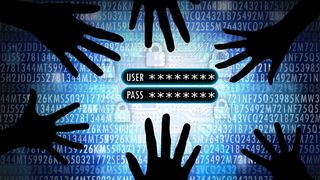Is your identity at risk? 5 red flags to look out for
Since the explosion of the Internet in the mid-1990s, the risks of identity theft and fraud have increased significantly. Initially, online payment systems and stores raised concerns about cybercrime, but as the Internet has become an integral part of life and society, the risk has only increased.
Who is most vulnerable to identity theft? Are younger generations who grew up with the Internet more aware of the risks, or are older adults who are more skeptical and distrustful less likely to become victims? How do you know if your identity is at risk of being stolen?
Some people are more at risk than others
Identity theft is a persistent problem that has existed for a long time. These are individuals who pretend to be someone else to gain financial advantage. Today it has become a major form of fraud, with criminal gangs operating specialized units focused on stealing identities and committing subsequent fraud and sometimes extortion.
However, the risk of identity theft is not the same for everyone. If you can keep your identity under control, you can prevent your identity from being stolen and fraud cannot be committed in your name.
Unfortunately, some people are more vulnerable to identity theft than others. Here are five key signs that you may be at risk for identity theft.
1. You don’t check credit card or bank statements
When you receive a bank or credit card statement, you may be tempted to toss it aside without opening it. After all, you know what you bought and what bills you paid, so what’s the point of checking? However, it’s important to remember that if your credit card has been cloned, you may not be aware of the fraudulent activity without checking your statement. Likewise, if someone has opened a loan in your name and is making monthly payments from your bank account, you won’t know this until you read your bank statement. That’s why it’s always a good idea to take the time to carefully review your financial statements.
2. You use the same username and easy-to-remember password for each account
Is it easier to use the same username and password for all your accounts? It may seem like a good idea because passwords are hard to remember. But it is risky and complicated. Using one password for all your accounts makes it easier for someone who finds your password to access all your data. They can access your cloud accounts, email and social media with just one password. Even if banks and credit card accounts require additional information, a scammer who has your passwords for everything else has enough information to pretend to be you on the phone.
3. You never checked your credit report
Have you ever thought that your credit report is only needed when applying for loans or mortgages? Do you believe it is only available to banks and lenders? You don’t know how your information is compiled if you haven’t read your credit report. You will not understand how your bills are paid off monthly and what credit searches have been performed. For example, when you buy a new phone, the company must run a credit check. If you have paid off a loan, this will be noted on the credit report. If someone used your name to apply for credit, you won’t know until you check your credit report. It’s high time you sign up for Experian or similar services so you can access your credit report and view it monthly.
4. You happily click on links in emails claiming to be from your bank
Have you ever received an unsolicited text or email asking you to verify your login details? Scammers online use a deceptive technique to exploit this habit by sending messages that appear to come from your bank or financial institution. They can even include your bank’s logo and font to make it seem legitimate.
The email usually contains a link asking you to verify your account information by entering your username and password. However, it is crucial to remember that these messages are part of a fraudulent scheme. The scammers record your login details and any other sensitive information you may provide. Therefore, you should avoid clicking links in unsolicited messages and never provide your login information unless you are completely sure that the message is legitimate.
Have you heard of oversharing? It is when you reveal too much information about your life to others, such as on social media platforms like Facebook. This can include sharing photos of your meals, your thoughts on your daily commute, your current location, previous locations, and the people you spend time with.
However, this type of information can be used by identity thieves to create a profile of you. They can use this information to commit crimes such as robberies, stealing your phone and wallet, and assuming your identity to obtain a line of credit. Additionally, they can use it to track your whereabouts and break into your home to get your banking information.
Social media can be fun, but sharing everything can be dangerous. It is essential to be more careful and selective in what you share. Share only the good times and limit the information you provide, especially regarding your current location and activities. You can also disable the ‘check-in’ feature and keep your friends list small to protect yourself from potential threats.
Counteract your risky behavior
Additional signs of possible identity theft include carrying your Social Security Number (US) or National Insurance Number (UK) in your wallet, and not securing your bank statements where visitors cannot access them. It is important to recognize the dangers and not assume that it will not happen to you. Instead, responsible behavior that takes into account the significance of your financial situation is necessary. Having your identity stolen can be a life-changing experience, and it is essential to prevent it. Fortunately, you can prevent identity theft by avoiding common mistakes and adopting new behaviors that protect your identity.


